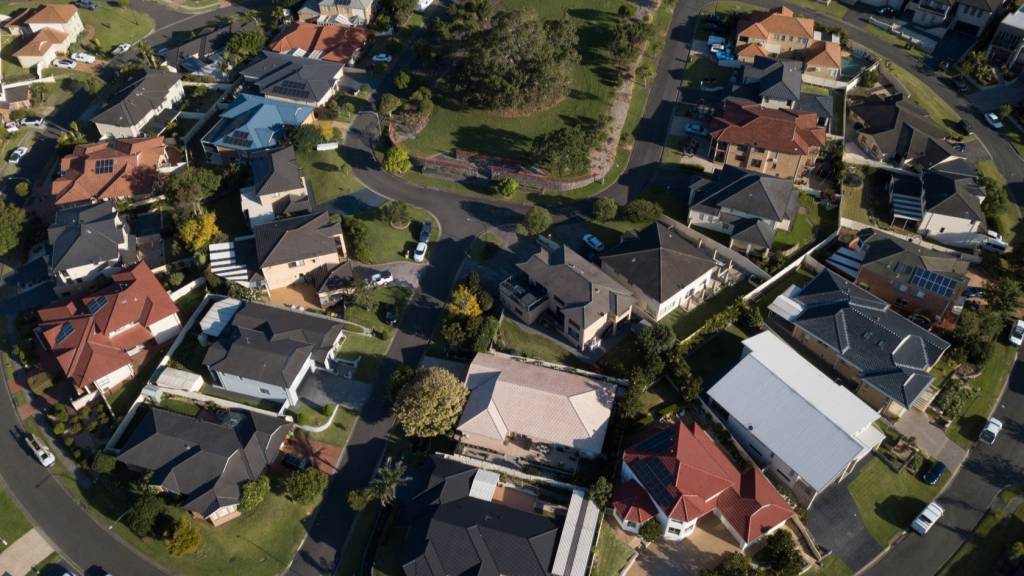
The average Australian home has become $40,000 more expensive than a year ago, with median house prices across the nation nearing the $1 million mark. This surge in property values comes as the Reserve Bank of Australia (RBA) prepares for its upcoming interest rate decision, and as OpenAI advocates for tax incentives to boost artificial intelligence adoption in the country.
According to the latest data from Cotality, home values have risen for the fifth consecutive month, increasing by 0.6% in June and 1.4% over the quarter. The national median house price now stands at $837,586, with Sydney leading at a median of $1.21 million, followed by Brisbane at $926,243.
Factors Driving the Housing Market Boom
Tim Lawless, Cotality’s research director, attributes the rise in housing values to recent interest rate cuts. “The first rate cut in February was a clear turning point for housing value trends,” he stated. “An additional cut in May, and the growing certainty of more cuts later in the year, have further fueled positive housing sentiment, pushing values higher.”
The RBA’s board is set to meet next Monday, with an interest rate decision expected on Tuesday. Meanwhile, data from REA Group’s PropTrack indicates national home prices climbed 0.4% in June and 4.6% over the year, with stronger buyer demand and fewer listings driving record highs.
Reuters reports that economists predict Australia’s home prices will rise steadily by 4% to 5% annually over the next three years, following a 40% increase in the past five years.
Challenges and Constraints
Despite the upward trend, several factors are expected to temper further price increases. Reduced demand due to slowing population growth, elevated household debt, cautious lending policies, and geopolitical risks are all cited as potential constraints.
REA senior economist Eleanor Creagh noted, “Stretched affordability is putting a bit of a handbrake on home price growth. Although we’re seeing an upswing in prices this year as rates fall, we’re witnessing a more gradual pace of growth compared to previous easing cycles.”
Lawless added, “We’re still seeing housing very much unaffordable for most Australians. There are still barriers to a significant market take-off, suggesting modest but broad-based growth through the rest of 2025.”
AI Tax Incentives: A New Economic Frontier
In parallel with the housing market developments, OpenAI is lobbying the Albanese government to introduce tax breaks for businesses adopting artificial intelligence. The company claims AI could boost the Australian economy by $115 billion by 2030.
OpenAI’s Chief Economist Ronnie Chatterji, during his visit to Canberra, emphasized the importance of AI in enhancing productivity. “It’s a good time where there’s a big conversation in economic policy circles about how to increase productivity,” he said.
OpenAI’s economic blueprint suggests, “A nurse unburdened by paperwork can spend more time with patients,” and “a business owner with more bandwidth can pursue bold ideas.”
The proposal includes government investment in AI training and the introduction of AI literacy and ethics lessons in schools. However, ACTU secretary Sally McManus insists that the benefits of AI should be equitably shared with workers, not just corporations.
International Trade and Tariff Tensions
Amid these domestic economic discussions, the Albanese government is also dealing with international trade tensions as US President Donald Trump’s 90-day tariff pause is set to expire next week. Foreign Affairs Minister Penny Wong is currently in Washington aiming to secure tariff exemptions for Australia.
Prime Minister Anthony Albanese has expressed optimism, stating, “We continue to put our case forward that it shouldn’t be 10%. It should be zero.” However, the outcome remains uncertain as international negotiations continue.
In a related development, Canada recently scrapped a tax targeting US technology firms to advance stalled trade negotiations with the US.
Looking Ahead
As Australia navigates these complex economic landscapes, the outcomes of the RBA’s rate decision, AI policy discussions, and international trade negotiations will significantly impact the nation’s economic trajectory. The housing market’s future remains uncertain, with affordability and economic policies playing crucial roles in shaping its path.
Meanwhile, the potential integration of AI into various sectors could redefine productivity and economic growth, provided the benefits are distributed fairly across society. As these developments unfold, stakeholders across the board will be closely monitoring the implications for Australia’s economic future.






